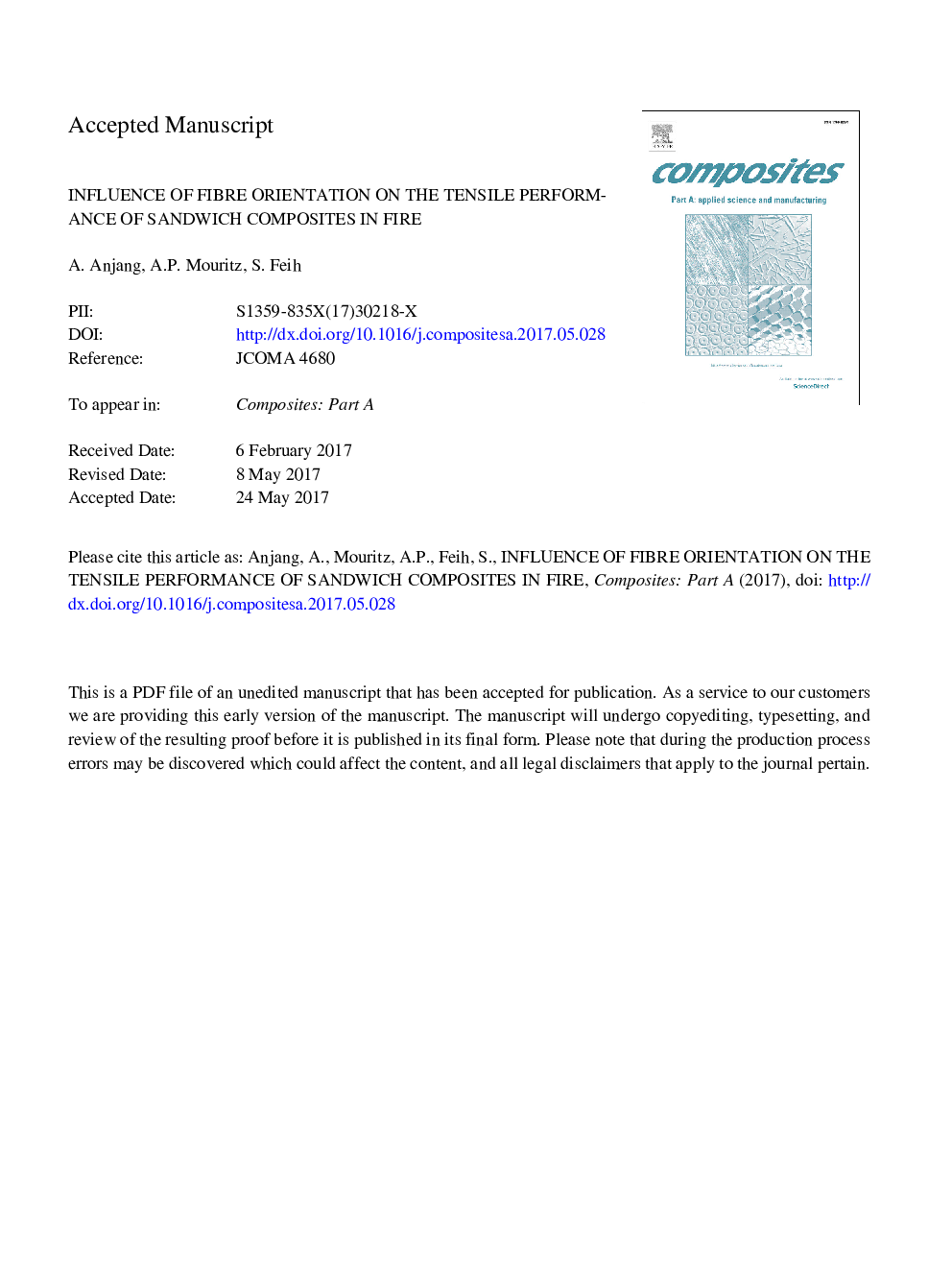| Article ID | Journal | Published Year | Pages | File Type |
|---|---|---|---|---|
| 5439517 | Composites Part A: Applied Science and Manufacturing | 2017 | 37 Pages |
Abstract
The effect of fibre orientation on the tensile load-bearing performance of sandwich composite materials in fire is investigated experimentally and analytically. The orientation of the glass fibres in the laminate skins was set at 0° (perfectly aligned in the load direction), or offset at angles of 9°, 15°, 30° or 45°. The influence of fibre orientation on the time-to-failure and failure mechanism during fire exposure is investigated. Experimental testing reveals that the structural performance of the sandwich composite deteriorates rapidly with increasing fibre offset angle due to glass transition softening of the polymer matrix becoming more dominant, and the fibre properties being less important as the laminate skins thermally soften and decompose. A thermal-mechanical model is presented to analyse the deterioration to the tension load-bearing performance with increasing fibre offset angle, and the analysis reveals that even small fibre offset angles have a substantial adverse impact on the fire performance of sandwich composites.
Related Topics
Physical Sciences and Engineering
Materials Science
Ceramics and Composites
Authors
A. Anjang, A.P. Mouritz, S. Feih,
